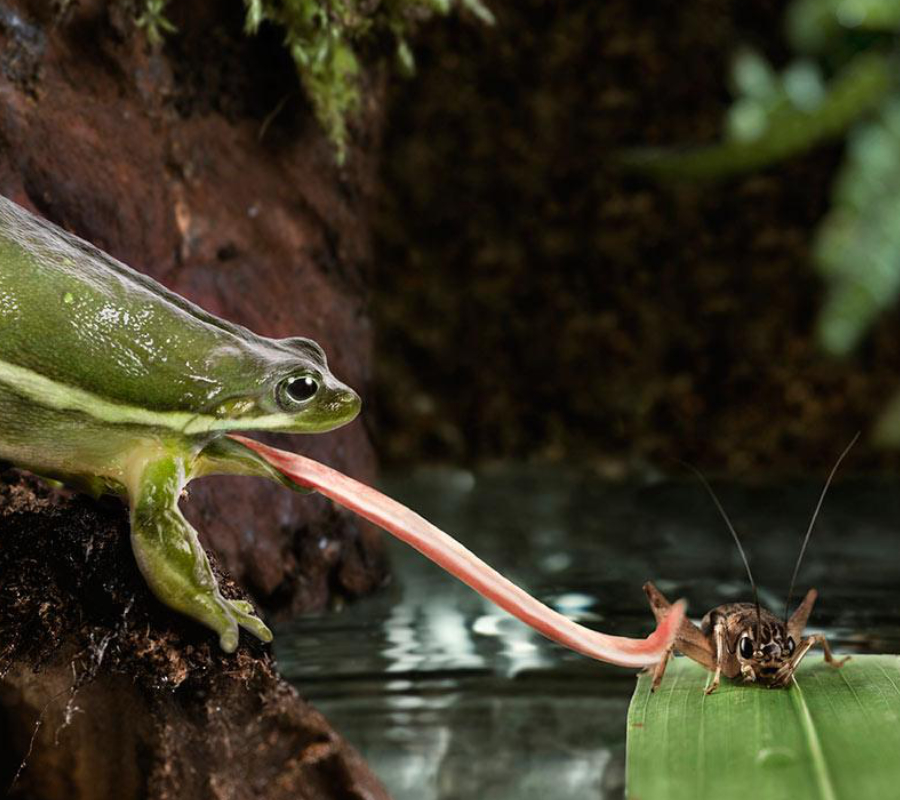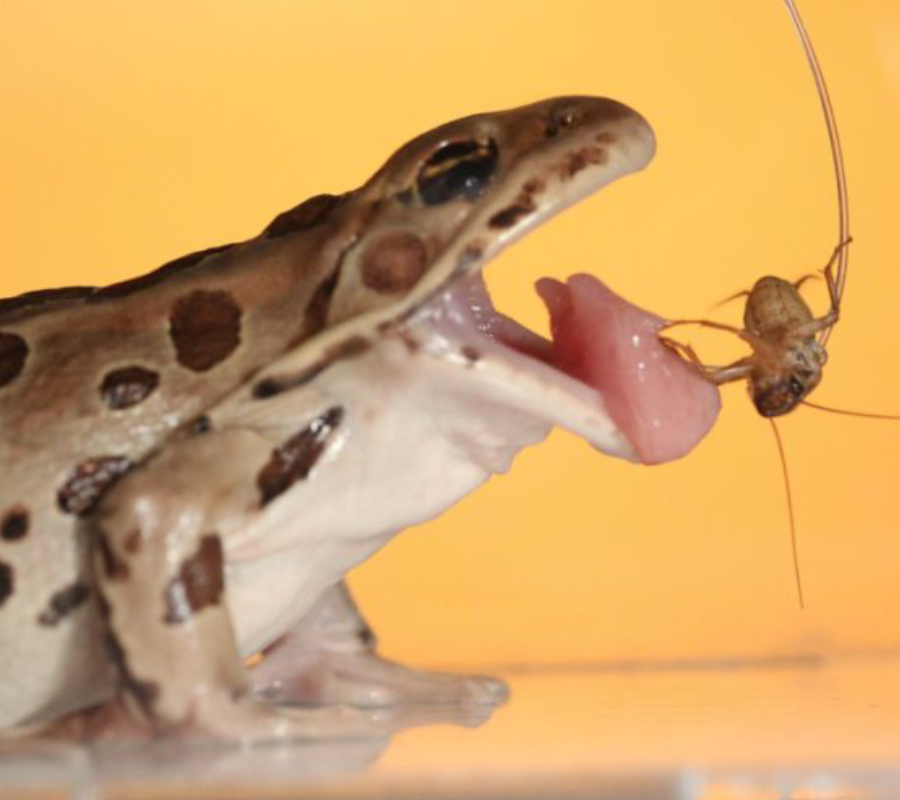Engineers from Georgia Tech documented the mechanism through which a frog can catch its prey.
Apparently, it is due to the combination of its sticky saliva and its soft tongue, which was noted by researchers to be as soft as brain tissue and ten times softer than a human’s tongue. The frog’s tongue-saliva mechanism can exert a force of adhesion 50 times greater than that of conventional synthetic polymers, such as the classic sticky hand toys.

Researchers managed to film frogs catching prey in high-velocity to analyze the process more closely:
Studying a classical adhesion mechanism in nature
Lead researcher Alexis Noel stated that the tongue resembles a bungee cord, deforming itself and pulling back towards the mouth. It stores force throughout the tongue, and it is applied on the saliva as the whole system retracts. Apparently, frog’s saliva absorbs the force of the collision and latches itself onto the prey for quick and forceful retraction.

“There are actually three phases. When the tongue first hits the insect, the saliva is almost like water and fills all the bug’s crevices. Then, when the tongue snaps back, the saliva changes and becomes more viscous — thicker than honey, actually — gripping the insect for the ride back. The saliva turns watery again when the insect is sheared off inside the mouth,” stated Noel to Georgia Tech press.
Noel also studied the viscosity of frog saliva, taking samples from 18 different specimens and measuring their properties by using a rheometer. According to David Hu, Noel’s adviser, studying how frogs catch prey is a method that allows engineers to understand how to design malleable adhesives that act appropriately under high-speed forces. He explains that most adhesives are “stiff,” but frog tongues are very soft and significantly stickier than standard materials used to latch on other objects.
The study points out that no commercial mechanism can measure up to the grabbing speed and strength of a frog’s tongue, which allows it to haul prey up to 1.4 times the frog’s weight.

As it impacts prey, the frog’s saliva, classified as a non-Newtonian fluid, can coat rough surfaces, allowing it to increase the tongue’s potential contact area. Researchers compared it to how paint coats a wall, and a common leopard frog achieved this at a speed of 4000 millimeters per second, equivalent to 8.9 miles per hour.
“To increase its work of adhesion, the frog instead relies on a soft tongue, similar to tape with a backing material made of jelly. When forces are applied, work is done to distend the frog tongue,” reads the study.
Source: Georgia Tech
